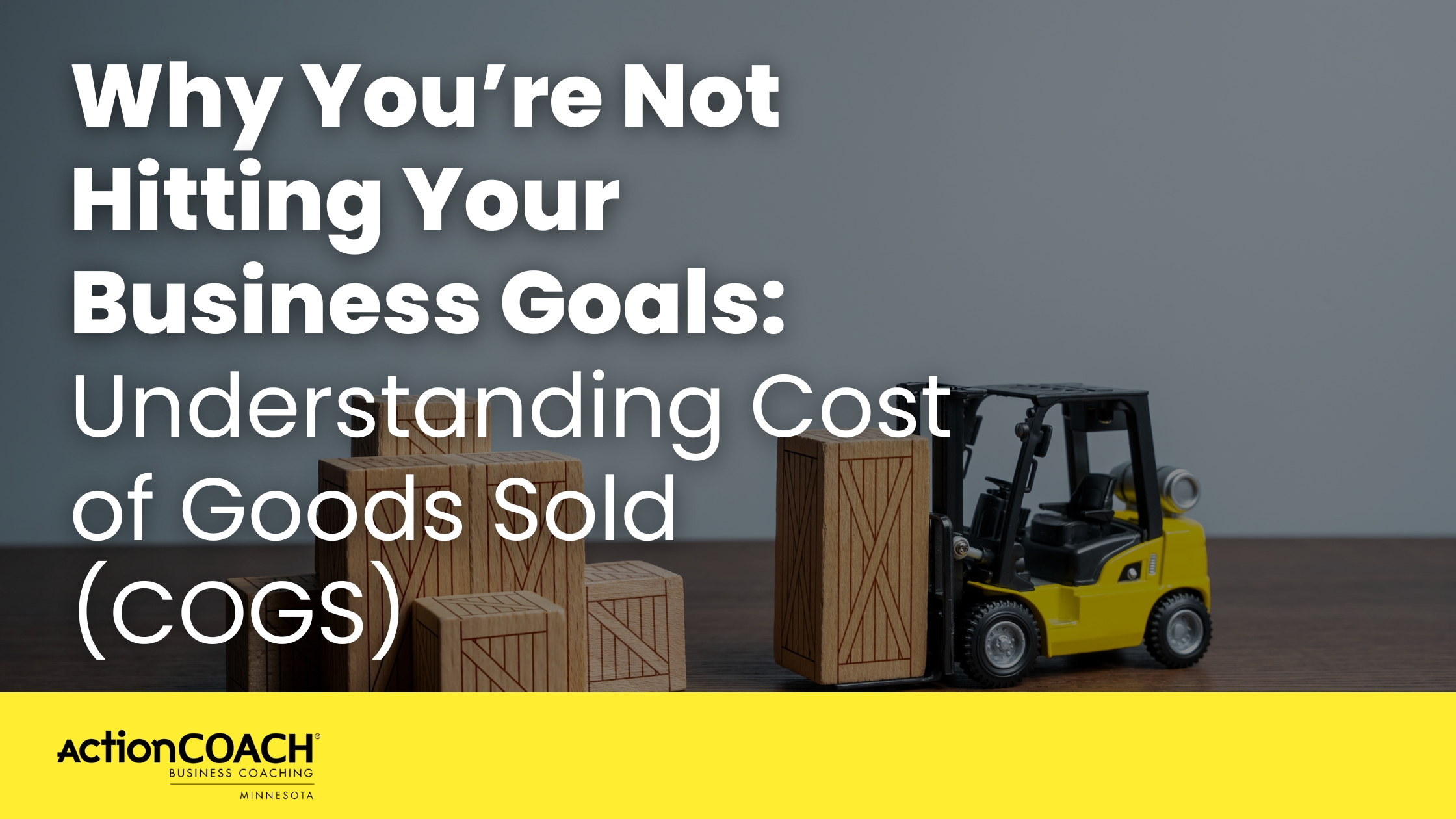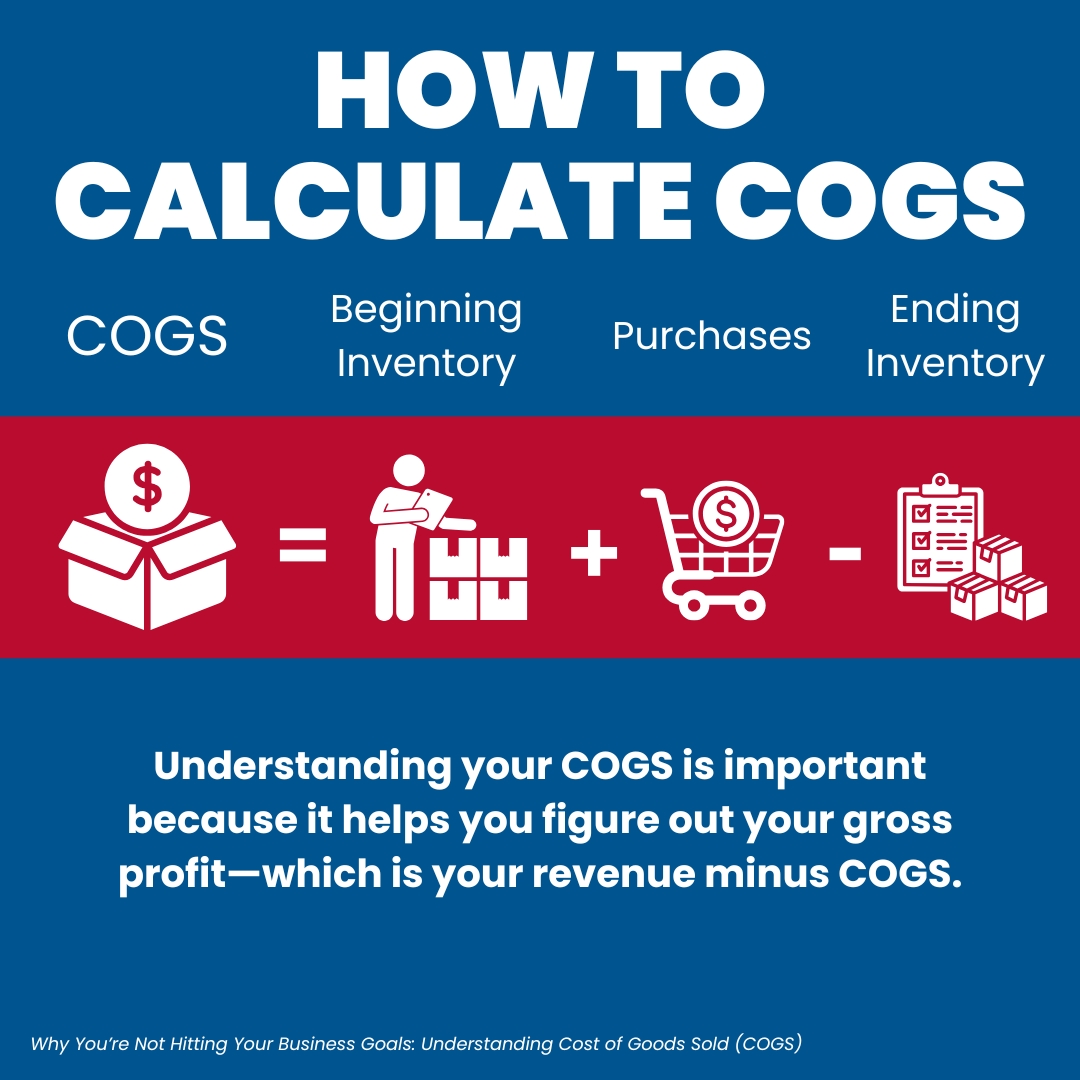
Why You’re Not Hitting Your Business Goals: Understanding Cost of Goods Sold (COGS)
Let’s talk about something that might be quietly draining your profits—Cost of Goods Sold (COGS). If this term sounds a bit intimidating, don’t worry—I’ll explain it in plain English and show you how understanding it can transform your business. Plus, I’ve got a real-life example or two to make it all crystal clear. Ready? Let’s dive in!
What is COGS, and Why Should You Care?
Simply put, COGS is the money you spend to make or buy the products you sell. It’s the foundation of your profit margin.
Think of it this way:
If you’re a baker, your COGS would include flour, sugar, eggs, and maybe even the packaging for your cookies.
If you own a boutique, your COGS is the cost of buying clothing from suppliers.
Understanding your COGS is like knowing how much gas it takes to drive your car. Without tracking it, you won’t know how far your business can go—or how much profit you’re actually making.
Real-Life Example: COGS in Action
Let’s say you own a coffee shop.
At the start of the month, you have $1,000 worth of coffee beans in stock.
Throughout the month, you buy an additional $500 worth of beans.
By the end of the month, you have $200 worth of beans left.

Using the formula:
COGS = Beginning Inventory + Purchases – Ending Inventory
COGS = $1,000 + $500 - $200 = $1,300
This means you spent $1,300 on the beans used to make the coffee you sold that month. If you sold $5,000 worth of coffee, your gross profit would be:
$5,000 - $1,300 = $3,700.
Pretty simple, right? But here’s the thing—if you’re not careful, those costs can creep up and eat into your profits without you even realizing it.
3 Common Mistakes Small Business Owners Make with COGS
1️⃣ Not Keeping Track of Costs
One business owner I coached had no idea how much they were spending on packaging for their handmade products. Once we added it up, it was clear they were losing money on every sale.
Tip: Keep a spreadsheet or use accounting software to track every expense tied directly to your product.
2️⃣ Confusing COGS with Operating Costs
I’ve seen people include their rent, marketing, or utility bills in COGS. But those are operating expenses, not direct costs.
Quick Rule: If the cost isn’t directly tied to making or buying your product, it doesn’t belong in COGS.
3️⃣ Ignoring Waste or Shrinkage
Whether it’s unsold inventory, damaged goods, or spoilage, these losses affect your bottom line. For instance, a restaurant owner I worked with wasn’t accounting for food waste, and it was throwing off their numbers.
Solution: Regularly audit your inventory and adjust your COGS calculations accordingly.
How to Reduce COGS Without Cutting Corners
1. Negotiate Better Deals with Suppliers
If you’re ordering in bulk, ask for discounts or better terms. One client I worked with saved 15% just by asking their supplier for a deal—simple, right?
2. Improve Efficiency
Think about your process. Are you wasting materials? Could you streamline production? A T-shirt business I coached saved thousands by switching to more efficient printing equipment.
3. Outsource Smartly
Sometimes, outsourcing certain tasks can actually save you money. A small candle business I worked with reduced costs by outsourcing their packaging instead of doing it in-house.
Let’s Talk About Your Business Goals
Understanding your COGS isn’t just about numbers—it’s about taking control of your business and steering it toward success.
If you’re scratching your head and thinking, “This makes sense, but how do I apply it to my business?”—I’ve got you covered.
I’d love to help you figure it out during a 90-minute complimentary coaching session with me. We’ll dive into your numbers, uncover hidden opportunities, and create a roadmap to better profitability.
Next Steps
COGS might seem like a small detail, but it can have a huge impact on your business’s success. So, let’s make sure you’re not leaving money on the table!
Click here to book your complimentary coaching session today. 🚀
CRAVING MORE INSIGHTS?
Stay in the Loop! Sign up for updates and be the first to know when we post—just 3-4 times a month.
Copyrights 2024 | PivotPointActionCoach | Terms & Conditions | Privacy

